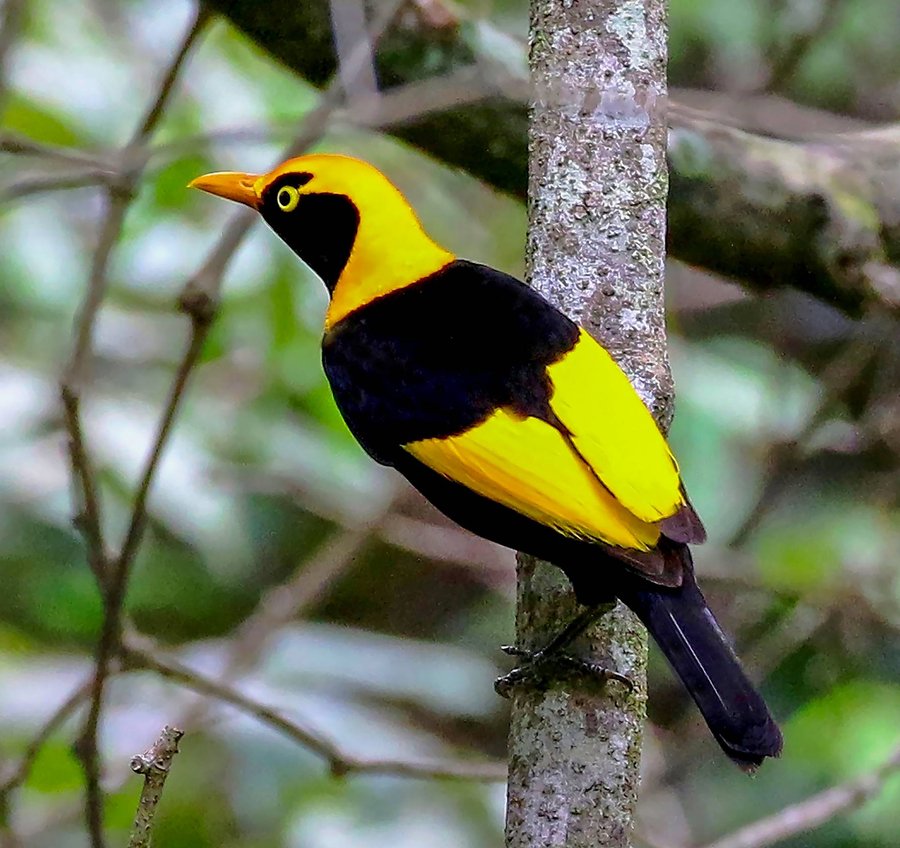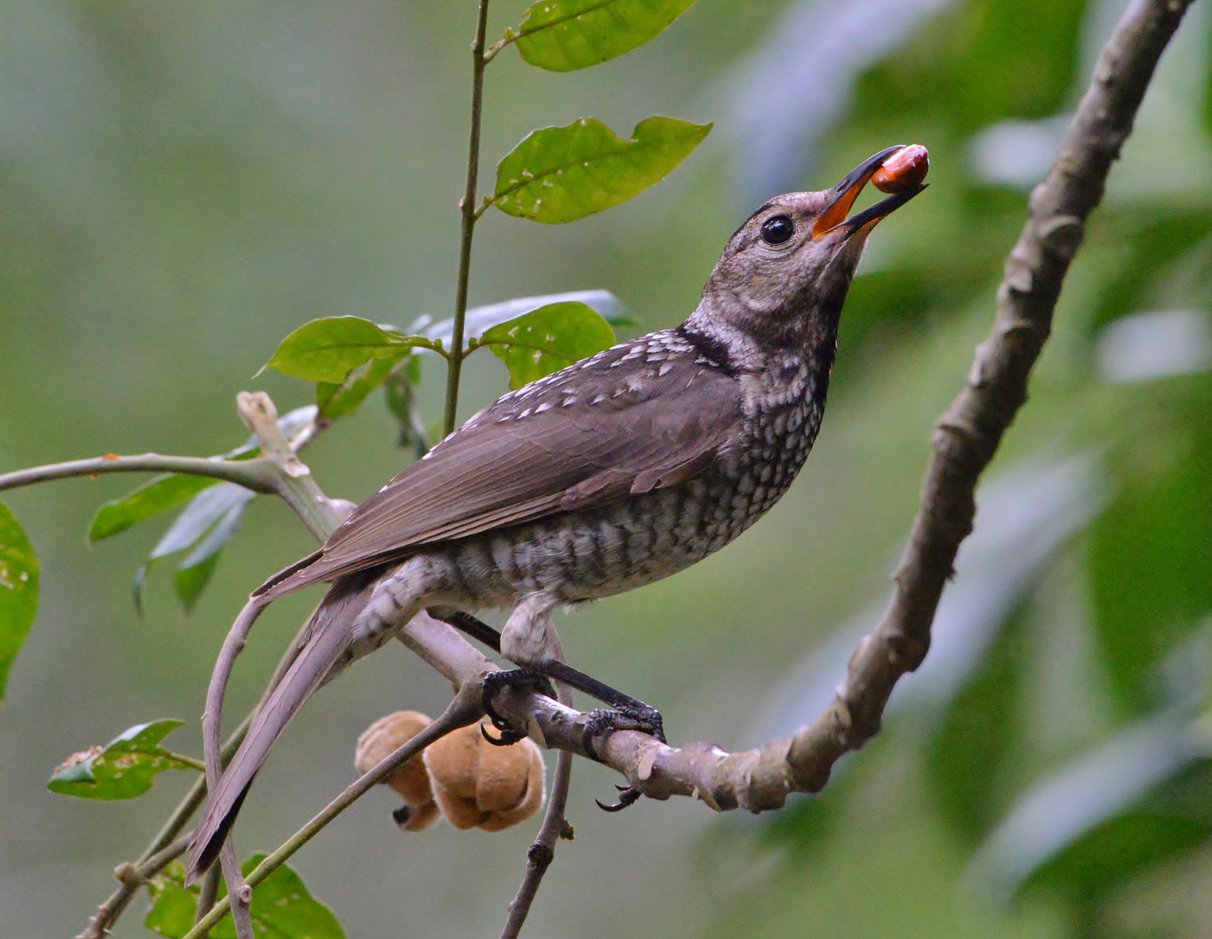Australia has many amazing birds and one of the most spectacular is the Regent Bowerbird. No matter how many times I see one, I marvel at the stunning gold and black livery (on the male of course as usual, more on this later) that stands out against the backdrop of its usual green rainforest habitat. In accord with this livery, the Regent Bowerbird was named in honour of the Prince of Wales, who was Prince Regent (1811-1820) in the reign of George III, King of England. The Prince was the Regent at a time when George III was unable to effectively manage the affairs of State.

The Regent Bowerbird is a small, slim bowerbird with a long, straight slender bill. The male bird is glossy jet black with bright gold on its head, nape and wings. The male’s bill and eye are yellow. Being sexually dimorphic, the female is brown-black, mottled brown, with light brown scallops on its back and breast. There are dark patches on the back of its head and on the lower nape. The female’s bill is dark brown to black and the eyes are yellowish-brown. The immature male is similar to the female on its underparts and to the male on its upper parts i.e. head back and wings (except the primary feathers which are brown). The male’s tail is shorter than that of the female or immature birds.
The Regent Bowerbird is found in forests, particularly rainforest and densely treed gullies in south-eastern Queensland and north-eastern New South Wales, on the eastern side of the Great Dividing Range between Agnes Waters and Sydney with an outlying pocket around Eungella, inland from Mackay.

The male Regent Bowerbird, in common with all male bowerbirds, builds and maintains a bower at which it mates with several females. The bower is a small, simple, open type which is not attached at the top. It consists of twigs and is 15 cm – 20 cm long and 30 cm high and is usually not highly decorated. Male Regent Bowerbirds will usually destroy and move their bowers within a week or so of construction.
True to form, the male does not participate in nest building nor feeding the young. After mating, the female fends for herself, building the nest, incubating the eggs and rearing the chicks. The saucer shaped nests of twigs and rootlets are generally constructed amongst dense rainforest trees. The female normally lays two or three eggs, incubating them for 20 to 21 days, then rearing and feeding the chicks.
The Regent Bowerbird feeds mainly on fruit, berries and insects. They feed in both the canopy and the understory, perhaps depending on the availability of food. On a recent (October 2023) trip to Benarkin State Forest we observed a Regent Bowerbird feeding on Silky Oak (Grevillia robusta) flowers. While a close observation revealed that their heads were right in the flowers, we assumed they were foraging for insects attracted by the flowers, not eating flowers or nectar. Not far away, a second male was observed feeding on Lantana (Lantana camara). Again we assumed that the birds were feeding on the fruit. Benarkin State Forest is not what would normally be considered as good habitat for Regent Bowerbirds.

Regent Bowerbirds play an important role in the dispersal of fruits and seeds. In a study of the spread of weeds, 28 native bird species were observed to feed on both native and introduced plant fruits and seeds*. The Regent Bowerbird comes in at number one in the spread of native plant species (73 plant species) that are threatened by the presence of Lantana and number 7 in the spread of introduced plant species (11 plant species) including Lantana. It is also possible that Lantana may provide food for and support the presence of Regent Bowerbirds in what might otherwise be marginal Regent Bowerbird habitat such as Benarkin State Forest. These observations highlight the dilemma and complexity of managing invasive weeds, particularly invasive weeds that supply food and shelter for our native birds.
*Peter J. Turner and Paul O. Downey. 2008. “The role of native birds in weed invasion, species decline, revegetation and reinvasion: consequences for lantana management”, Sixteenth Australian Weeds Conference.


